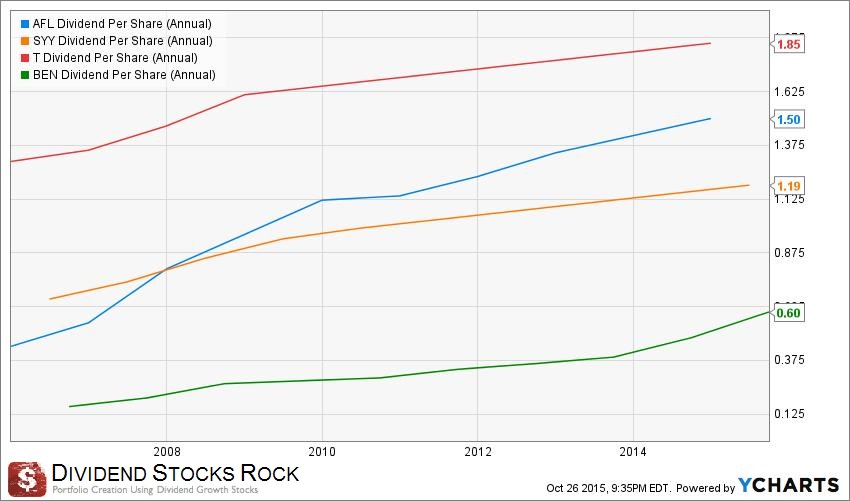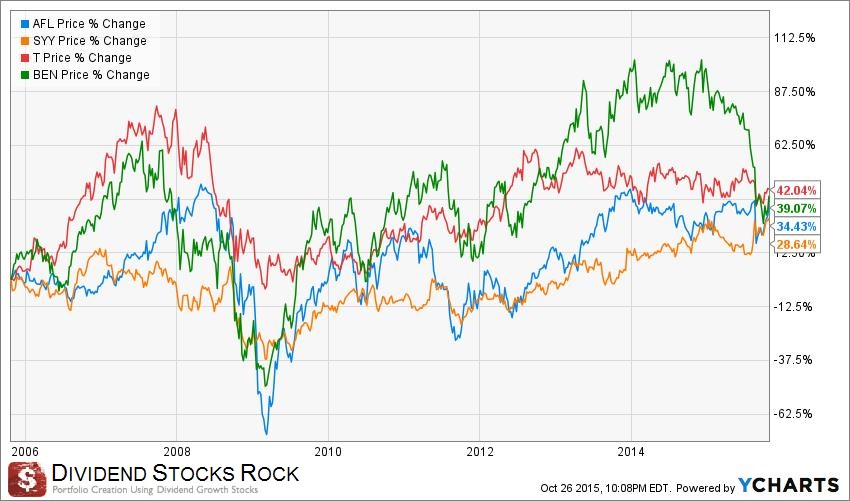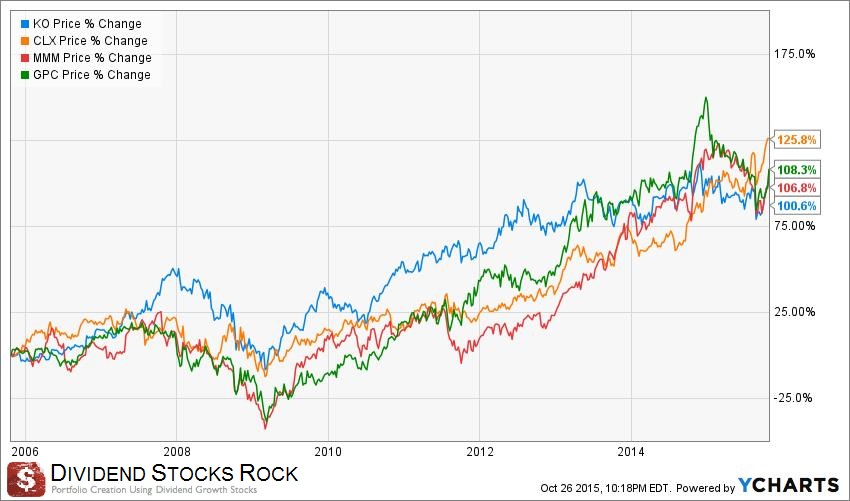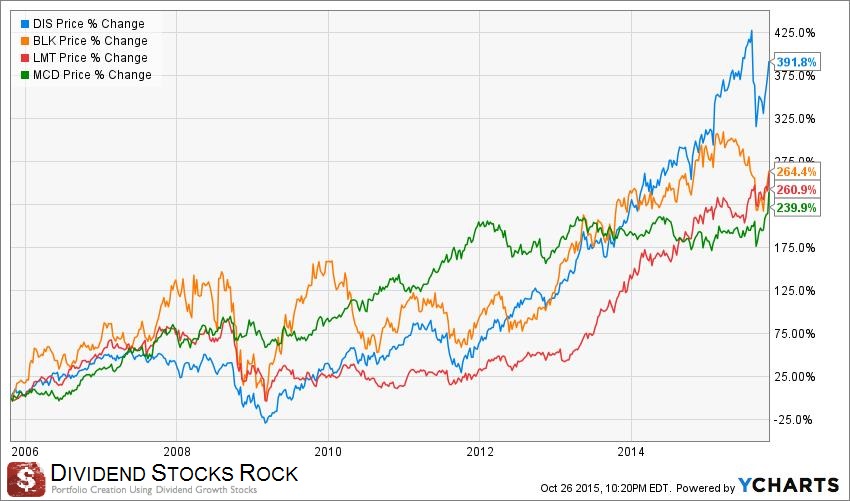I don’t really care where the market is currently or where it’s headed as long as my dividends continue to be paid.
I often read this on blogs when the market is going sideways. When you think about it, I guess it can make sense.
First, dividend growth investing is for the long term. Then, you don’t need to worry about a bad month; a bad quarter or even a bad year; if you invest for the next 25 years, 12 months is nothing. When you select a solid company, you can sleep on it and wait for 10 years before looking at it again. Chances are you will have made money through this period with both the stock value appreciation and the dividend payment.
Second, dividend payments can continue during market volatility. One thing I like about dividend investing, and you will read this argument over and over again, is that you get paid to wait. While the market is down, you still receive your dividend payment (if the company doesn’t cut it obviously). It also helps to smooth out your overall return. For example, if the market is down by 10% and you receive a 4% dividend yield, your total return will only be -6%. On top of this, you will benefit from additional liquidity to invest in a down market, e.g. buy more shares at a cheaper price.
Third, dividend payments may even increase during bad markets. There are several “market warrior companies” increasing their dividend even when their stock price is down by 20%. One must understand that what happens to the value of a stock is not directly linked with its dividend policy. Most of the time, a stock price will drop simply following the overall market. For example, back in August-September 2015, most stocks saw their value going down by roughly 10%. Do all companies post negative sales and earnings growth during this short period? Far from it. The market might be worried about the overall perspective; it doesn’t restrain good companies from making money and to hike their dividend payments. This is what good companies do.
These are Really Good Reasons, but Beware of the Dividend Trap
The problem I see with many dividend growth investors is the fact they focus solely on their quarterly payments. As long as the dividend increases, they are happy campers. I strongly disagree with that (yeah… prepare your tomatoes, I’m ready! Hahaha!).
In order to illustrate my point, I’ll share with you 4 companies that are known for increasing their dividend on steady basis for at least 25 years. When you look at their dividend growth, all dividend investors would want to jump onto their boats:

But these companies have little to offer when you look at their stock price:

In order words; if you are content with the dividend growth, you are missing the real party.
I call this phenomenon of focusing solely on the dividend increase the “dividend trap”. Similar to the value trap, the dividend trap catches the investors’ attention with an attractive dividend (vs an attractive valuation in the case of the value trap). However, you don’t get much but the dividend when you buy such a company.
If you have made your research properly, you could have found better performing dividend growth stocks such as the following:

Or super powered dividend growth stocks such as:

You are right; I’m cherry picking here. It’s easy to pick up 12 stocks and divided them into three categories the way I did it. But my point is the following:
These 12 companies are all showing dividend growth payments, but selecting the wrong companies solely based on dividend payment makes you miss important opportunities. In other words; being content with dividend growth shouldn’t be enough.
How to Avoid the Dividend Trap
There isn’t a magic set of rules to avoid dividend traps. To be honest, I think I have one right now in my portfolio (Wal-Mart (WMT) anyone?). I guess the first key is not to be blinded by the dividend growth. It’s not because a company keeps increasing its distribution that automatically, it is a good company to buy. A company could be mediocre or have a mediocre future and decides to blind investors with its growing dividend.
A couple of years ago, I sold McDonald’s (MCD) for the very same reason: I am now convinced it will become a dividend trap. While it is part of the third group I presented in my chart above, the company’s best moments seem behind it. I might be wrong, but the company stock price hasn’t gone anywhere since 2012.
This leads me to the second key; making sure the company has a bright future. If you read this blog, you know I’m a big fan of Disney’s (DIS) business model. I think the company is well positioned to show further growth in the upcoming years. I’m not too sure this situation will happen with MCD. I’m not saying the company will go bankrupt or it is a bad investment either. My point is that I believe MCD will have a hard time finding a growth vector and will continue to hover in the stock market for several years. The dividend distribution will continue to increase, but the investor will be left with very little besides its dividend payment. Since there are tons of great companies paying dividends, I don’t get the point of bothering keeping companies that will fall in the dividend trap when you can pick stronger companies.
I recently made a list of 10 dividend growth stocks that will provide both stock value appreciation and dividend growth. You can download my free report here.
Disclaimer: I own shares of DIS, LMT, KO, WMT.
